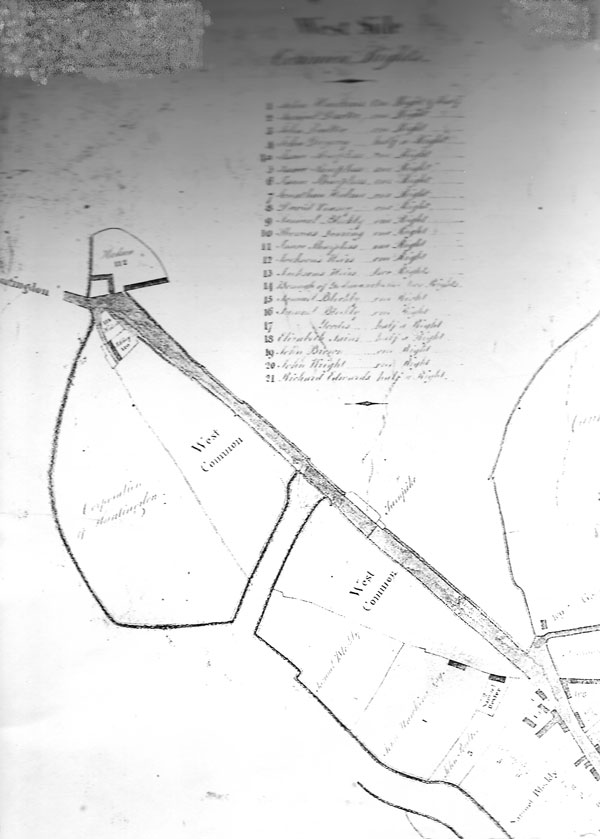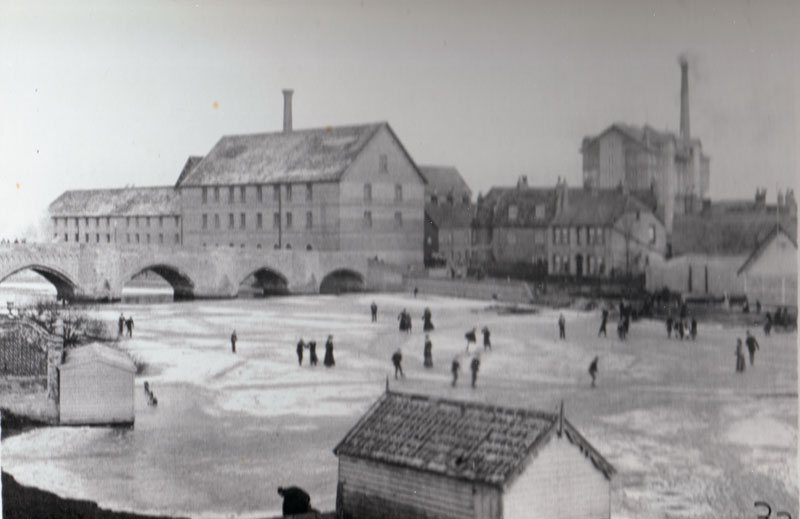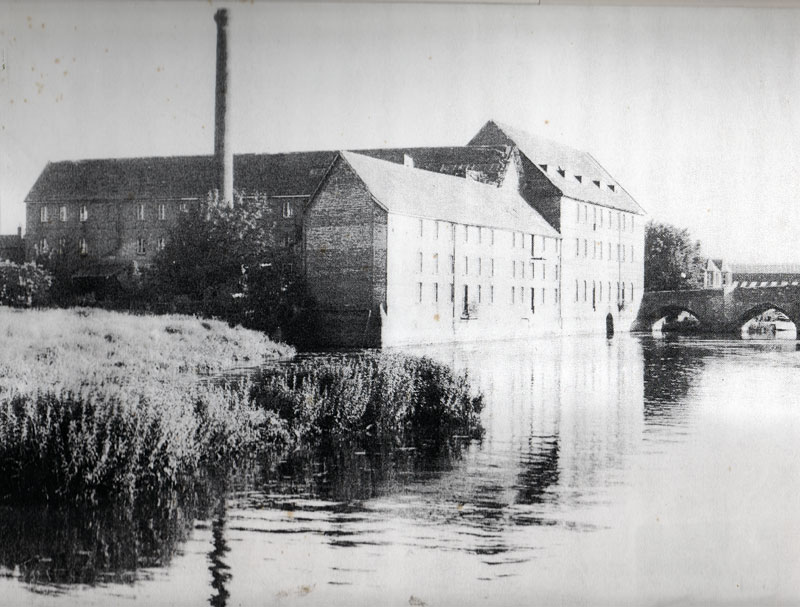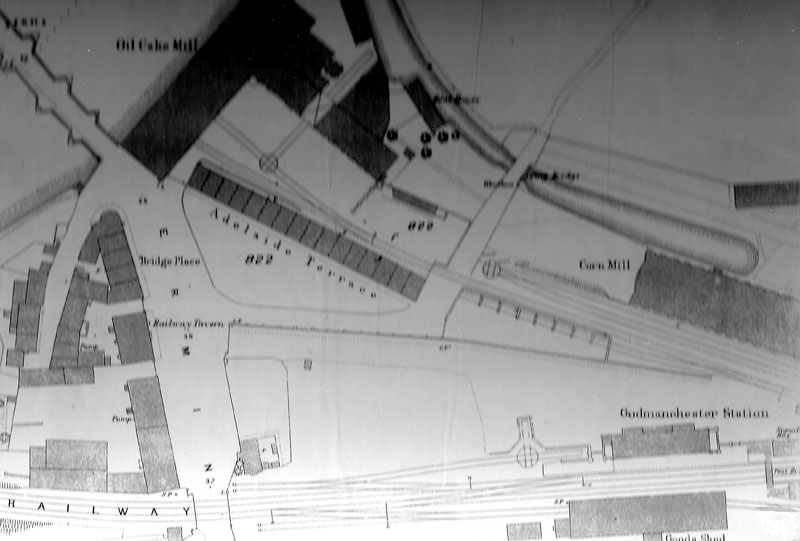 Fig. 1Various writers have suggested dates between 1840 and 1850 for the building of the Mill.
Fig. 1Various writers have suggested dates between 1840 and 1850 for the building of the Mill.
An exact date is not known, but the map (Fig 1) of West Side Common Rights of 1853 prepared by a surveyor, E.E.M. Goode, for the local Board of Health, does not show the mill (the site is numbered 112) and the census returns for 1851 do not include any employees in the mill and no inhabitants of Adelaide Terrace.
The census of 1861 lists one foreman oil miller living in Bridge Place, nine oil millers and two other men as living in Adelaide Terrace. It therefore seems likely that the mill and the houses in Adelaide Terrace were built between 1853 and 1861.
Although built beside the river the Mill was not a water mill. The two photographs (Figs 2 and 3) were taken from the Huntingdon side of the River Great Ouse and both show a tall chimney at the rear of the mill. This was part of a large coal fired steam engine which provided the power for the mill. Fig. 2 also shows the seven storey flour mill (right hand side of the picture) with its chimney, built in 1861 after the Riverside Mill, and often confused with it. The date of photograph Fig 2 is not known but the clothing of the skaters suggests that it was taken around 1900.
 Fig. 2 Fig. 2 |
 Fig. 3 Fig. 3 |
Fig 4 is an ordnance Survey map published in 1886, and shows the Riverside Mill named as an Oil Cake Mill alongside the Great Ouse and next to the 14th century bridge to Huntingdon and Ermine Street. It also shows Adelaide Terrace where many of the oil millers lived, the Corn Mill and the railway which was opened in 1847.
Mr Charles Veasey, a member of a well-known Huntingdon merchant family, owned the land on which the mill was built and had interests in the corn and coal trade, including a railway siding bought in 1848, malting and timber and it seems likely that the building of the mill to make oil cattle cake from locally grown linseed was a natural extension of his trading interests.
 Fig. 4
Fig. 4
The heavy and complicated machinery smoked the linseed to express the oil and press the residue into cakes for cattle consumption. Of the ten oil millers listed in the 1861 census, six came from Yorkshire bringing with them experience of operating large scale machinery. The mill had the double advantage of good river and rail transport.